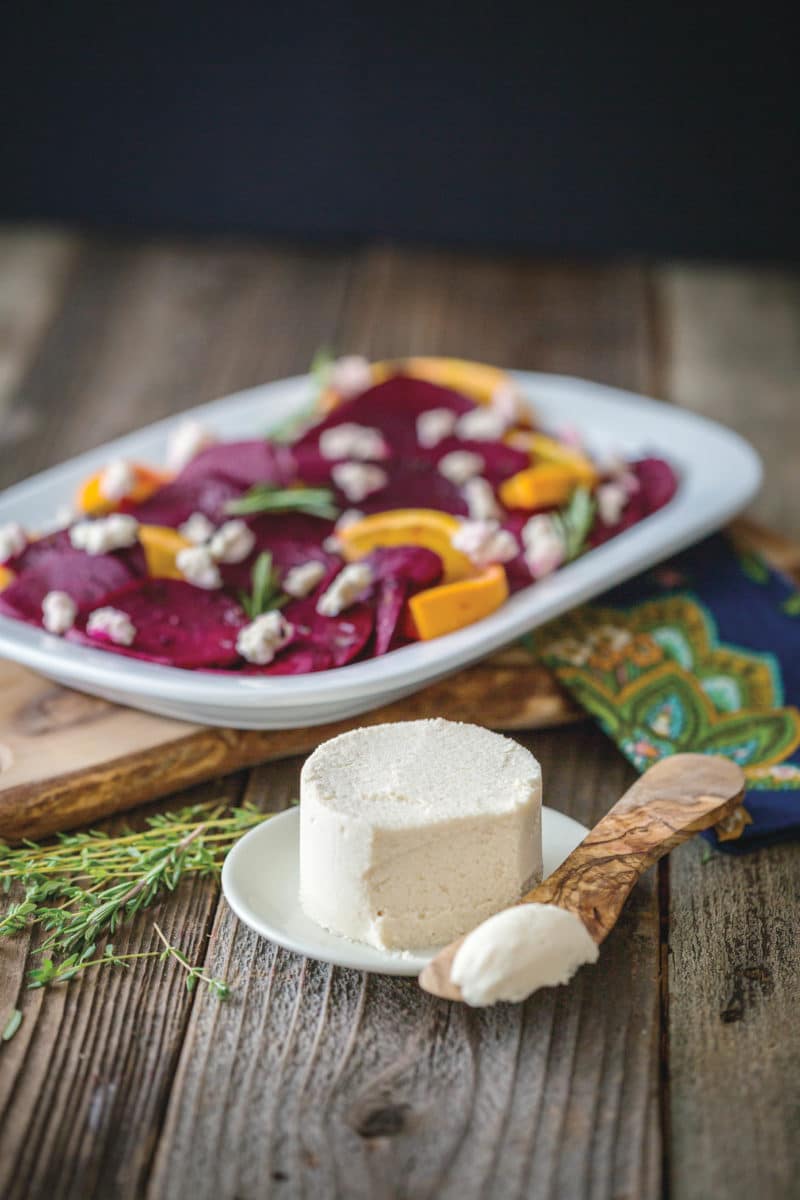At some point in my twenties, I went from being a basic cheese enthusiast to being obsessed with the stuff. I loved perusing cheese shops and having the cheesemonger explain the story behind each cheese I tasted. I began to research cheese in my spare time. Soon, I began to look for cheese-related jobs and it wasn’t long before I was leaving my career as a personal trainer to pursue a career as a fromagier/cheesemonger in a fancy French restaurant in West Hollywood. That job led to a cheesemonger position in a well-known Los Angeles cheese shop, and a month into that job, I was the head cheesemonger.
My days were spent researching and tasting new cheeses to sell in the shop, selling cheese to fellow cheese enthusiasts and describing the story behind each cheese to anyone who would listen. I could tell you what animal the milk had come from, what country and/or the state or region it was made in, the time of year the animal had been milked, how long the cheese had been aged, and any other special anecdotes about that particular cheese. My coworkers called me a “Cheese Nerd,” a title that I adored.
When I came into the shop each morning, I loved taking a huge whiff of the variety of strong smells the various cheeses had left in the air overnight, and when I left each day it was with a purely satisfied feeling that I hung up my apron. I had found my bliss. Or so I thought.
For some reason — I’m chalking it up to a total disconnect from reality — I’d never considered the actual process involved in getting milk from an animal. It hadn’t occurred to me that cows would be forced to become pregnant, and upon giving birth, their babies would be stolen from them. If they keep their babies, we can’t take their milk. I’d never considered what would happen to those babies or the painful bellows that mother would cry for days afterwards. Never in my wildest dreams did I think that consuming dairy would lead to male calves being stolen from their mothers and sold and killed for veal. While I’d been vegetarian for years and I’d always loved animals, I was definitely that person who upon meeting a vegan, would passionately exclaim, “I could never go vegan!” “I just couldn’t give up cheese! I can’t live without it!” I would moan.
Then, just a few years ago, a series of events led me to begin researching the truth behind dairy, and after watching a video of a baby cow being taken from its mother and hearing the way that mother cried for her baby, I knew right then that I could no longer justify this dairy obsession of mine. Not if this was the price. After doing more research, I soon announced to my husband that I was going vegan — and luckily, he chose to go vegan with me.
Obviously, one of my biggest concerns with going vegan was how I was going to satisfy my cheese cravings. I never imagined that there were simple ways to make your own vegan cheeses at home. I was determined, however, to find a way to fill that hole that dairy cheese had left in my diet.
At first, I relied on what vegan cheeses were on the market at that time. I was nervous about trying unfamiliar products, but after a few months I gave in and bought my first tub of nutritional yeast. Nutritional yeast is inactive yeast with a wonderful nutty, cheesy flavor and it turned out to be a total game-changer. After adding some to my tofu scrambles, I began to get curious as to what other cheesy delights there might be.
A lot of studying and experimentation showed me that nuts — especially cashews, macadamia nuts, and almonds — are magical when blended with other ingredients. They can create the richest, creamiest cheeses and cheese sauces you’ve ever tried. Tofu is another ingredient to make simple cheeses from — my tofu chèvre and tofu feta are two of my favorite cheeses!
To bring these cheeses to life, there are a number of ingredients you can use. As I mentioned, nutritional yeast is a fantastic addition to cheddary-flavored vegan cheeses. Plain white miso paste brings a sharp tanginess to whatever cheese you add it to. I also love to use lemon juice or vinegar to add some acidity and flavor, and often a tiny bit of tomato paste or roasted red bell pepper can add a little something special.
These days there are numerous resources to help you create your own cultured, aged nut cheeses. Miyoko Schinner (owner of Miyoko’s Kitchen artisanal vegan cheeses) wrote Artisan Vegan Cheese (Green Press Initiative 2012) which is rich with recipes to make every type of vegan cheese you could possibly be craving. There are also several great aged nut cheeses on the market. If you’re looking for a firm cheese that you can make quickly (i.e. non-cultured and/or aged), there are several solidifying agents to help with that process, such as agar agar (flakes or powder) and Irish moss (carrageenon).
Now when I enter the cheese section of a grocery store, the smell that used to excite me now turns my stomach. I rarely crave cheese anymore, but when I do, one of my homemade cheeses always more than fulfills that craving. And now, instead of listening to someone tell me the story of how the cheese was made, I’m making my own stories. ![]()
/p>
